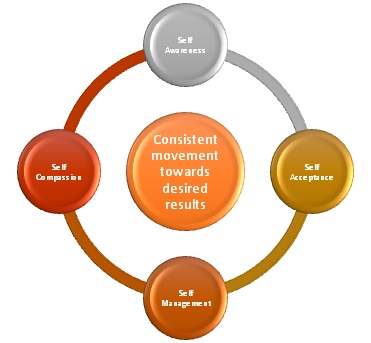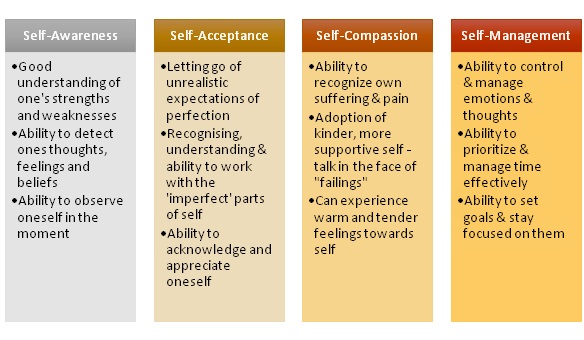A Coaching Model Created by Taaka Awori
(Leadership Coach, GHANA)
-
Introduction
Coaching has been described as an ongoing partnership designed to help clients produce fulfilling results in their personal and professional lives. I believe that a person’s relationship with themselves is fundamental to achievement of fulfilling results. When a person is highly self-critical and judgmental of self, he or she finds it harder to achieve the well-being they would like to experience. On the other hand, the more accepting and compassionate a person is with themselves, the more likely they are to be able to achieve their goals and be happy at the same time. My approach to coaching is structured around supporting clients to have a healthy and loving relationship with themselves as a foundation to achievement of specific results in their lives.
I have entitled my coaching model Leading Self. My coaching niche is leadership so the model is described with these clients in mind. It explains the use of the title Leading Self in juxtaposition to leading others or leading an organization. The model, however, is broad enough that it can be used in other coaching contexts such as life coaching.
-
The Model – Leading Self
 The model contains two critical elements: (i) consistent movement towards desired results; and (ii) enhanced relationship with self through self-awareness, self-compassion, self-management and self- acceptance.
The model contains two critical elements: (i) consistent movement towards desired results; and (ii) enhanced relationship with self through self-awareness, self-compassion, self-management and self- acceptance.
Consistent movement towards desired results. As indicated in the diagram above, consistent movement towards desired results is at the center. Each client begins with specific objectives they would like to achieve to improve their professional or personal lives or both. The coaching sessions are aimed at ensuring that the client is supported to move consistently towards achievement of these objectives. This progression from where a client is now, to where they want to be, is at the heart of coaching. Hence, it has been located at the center of the model.
Leading Self. Encircling and supporting the consistent movement towards results is a client’s development of a loving and accepting relationship with self. While a loving relationship with self could include many things, four areas are highlighted: self-awareness, self-acceptance, self-compassion and self-management. Examples of what each of these may include are provided below:
-
How the model works in practice
The model provides a framework or structure for the overall coaching process. As noted before, at the beginning the client will set their coaching objectives. Given that a loving relationship with self is preeminent in this model, the client will be encouraged, but not required, to include an objective related to this area among their objectives.
In each coaching session, the client will determine what they want to discuss and achieve with that particular conversation. The coach will support the client in this process by displaying the professional competencies expected of all coaches. These include:
At the end of session, the coach and client will agree on specific actions to take before the next session. This is how consistent movement is made towards coaching objectives.
Encompassing the movement forward towards achievement of desired results is a movement inwards: towards self. If the client has a specific objective around their relationship with self, they may choose to work on this during specific coaching sessions. Even if there isn’t a specific objective on this, the following types of questions from the coach may precipitate this shift in focus inwards:
Ultimately, the line between a focus on consistent movement towards results/objectives and a focus on one’s relationship with self is not hard and fast but more nuanced. It is not an “either or”, but an “and” as the two go hand in hand and complement each other. In each session, the coach will have to “dance in the moment” using intuition and experience to determine where to focus in terms of what will be most useful to the client.
-
Conclusion
There are many coaching models each reflecting the values and beliefs of the coach. By putting the model down on paper and sharing it with prospective clients, coaches are able to be more open about their beliefs, values and approach to coaching. Clients are then better able to determine whether the coach is a right fit for them. This model reflects my belief in the importance of loving self as fundamental to a person’s well-being and achievement of meaningful results in their lives. I hope my clients will find it useful in creating the life of their dreams.
